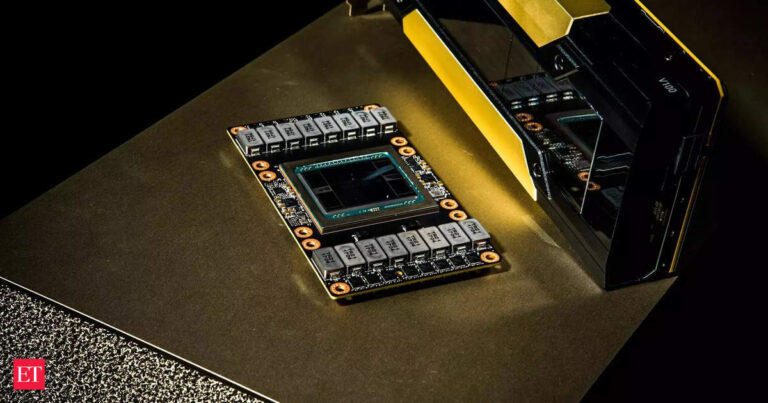“The United States currently leads the world in AI, both in AI development and AI chip design, and it’s important that we remain that way,” Secretary of Commerce Gina Raimondo told reporters.
Also read: ‘If you pick a fight with Canada…’: Khalistani supporter and former Trudeau ally Jagmeet Singh’s message to Trump
Here are 10 things to know about the U.S.-imposed AI chip regulations.
-The rules restrict exports of chips known as graphics processing units (GPUs), which are specialized processors originally created to speed up the rendering of graphics, news agency Reuters reported.
– Known for their role in gaming, GPUs like those made by US-based industry leader Nvidia can process a variety of data simultaneously, making them valuable for training and running AI models. – For the purpose of controlling global access to AI, the US is expanding limits on advanced GPUs needed to build clusters used to train advanced AI models. That cap equates to nearly 50,000 H100 Nvidia GPUs, said Divyansh Kaushik, an AI expert at Washington-based advisory firm Beacon Global Strategies. “50,000 H100s is a huge amount of power, enough to power cutting-edge research, run an entire AI company, and support some of the most demanding AI applications on the planet. ” he said. These could include running a global chatbot service or managing sophisticated real-time systems such as fraud detection and personalized recommendations for large companies such as Amazon and Netflix, Kaushik said. I added.
Also read: President Donald Trump’s inauguration: From Apple to Amazon, the complete list of top US companies that donated to the swearing-in ceremony
– The new restraints, the culmination of years of attempts to prevent China from establishing itself in military-industrial leadership, come as the United States and China move ahead of President-elect Donald Trump’s inauguration next week. This is expected to further heighten tensions between the two countries. They also sparked heavy criticism from US technology giants such as Nvidia and Oracle.
– A global export framework announced on Monday creates three tiers of countries for exporting advanced AI chips and technology. There are no new restrictions for our partners and allies, including Australia, Japan, South Korea and Taiwan.
– Yes, there are exceptions to the license. If a buyer orders a small amount of GPUs (equivalent to up to about 1,700 H100 chips), they will not count towards the cap and will only require government notification, not a license.
Also read: Mark Zuckerberg blames Apple for poor iPhone sales But who is actually paying the price?
-According to government officials, 18 destinations will be exempt from advanced GPU country caps. They are Australia, Belgium, United Kingdom, Canada, Denmark, Finland, France, Germany, Ireland, Italy, Japan, Netherlands, New Zealand, Norway, South Korea, Spain, Sweden, Taiwan, plus the United States.
-Another item controlled by the United States is known as “model weight.” AI models are trained to input large amounts of data and produce meaningful material. At the same time, the algorithm evaluates the output to improve the model’s performance.
-Since October 2022, the administration has announced several semiconductor export restrictions targeting Beijing. Chinese leader Xi Jinping has made self-sufficiency a key pillar of his economic strategy to make China a technology superpower.
(Information provided by agency)


